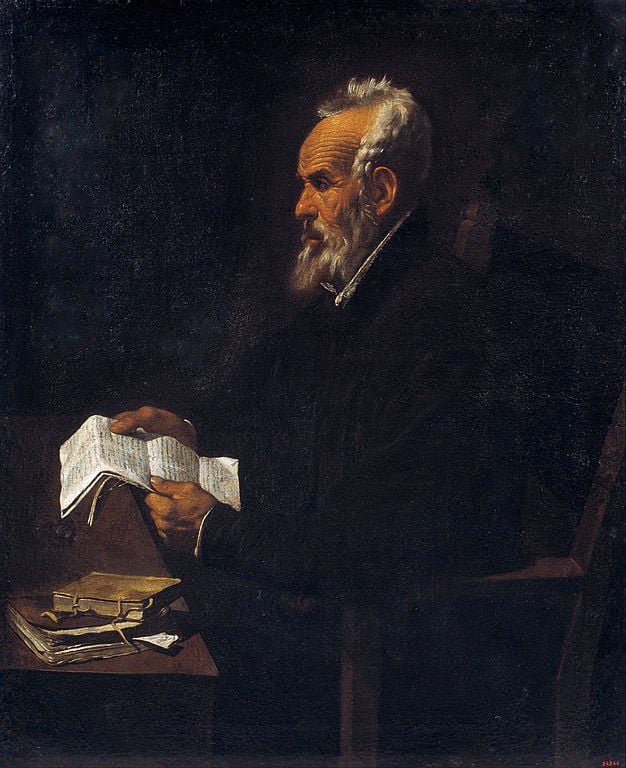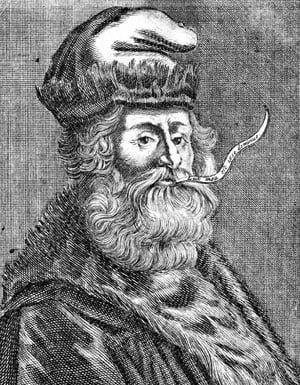
Who Was Ramon Llull?
Ramon Llull (pronunciation: rəˈmoɲ ˈʎuʎ) is a polymath who was best known for his work as a mathematician, figure in philosophy and Christian mystic in Majorca. He wrote the first major piece of literature on Mallorca. Though he does not exactly have a background in computing as it is known, his works are greatly studied in university computer science courses.
Manuscripts that recently surfaced indicate the author’s work predates by centuries prominent works on election theory. He is also considered a pioneer of computation theory, especially because he influenced Leibniz.
Quick Facts
- Net Worth
- N/A
- Children
- Domènec, Magdalena
- Nationality
- Spanish
- Place of Birth
- City of Mallorca (Palma, Spain)
- Fields of Expertise
- [“Mathematics”,”Theology”]
- Institutions
- Roman Catholic Church
- Contributions
- Ars Magna
Ramon Llull is known for writing a system of logic to synthesize types of truth in medieval times. Ars Magna, which literally translated means “The Great Art” was created as an instrument in interfaith dialogues to convert infidels.
Ars Llull had ample experience using Catalan to communicate his thoughts throughout 200 works written in three languages: Catalan, Arabic and Latin. He is one of the first authors that wrote literature for a vernacular language.
Early Life
Llull, born in Palma, Majorca by royals from Catalonia. Llull’s parents had come from Catalonia as part of the effort to colonize the newly conquered territories of Balearic Islands (now part of Spain).
As Christians conquered the island, the Muslim population who could not flee became enslaved, even though they still had a significant presence on the island.
Llull married Blanca Picany in 1257, and together they had two children, Domènec and Magdalena.
Llull served as tutor to James II of Aragon while he was king, and later became seneschal to the future King James II of Majorca, who was a relative.
Career
Calling to Religious Service
Llull experienced a religious epiphany in 1263 after having visions.
Juan de Llull had five visions which motivated him to give up his life as a prominent courtier and missionary. Specifically, he wanted to find people who rejected Christianity, write a book on how to convert them, and die in the service of God while doing so.
Following his epiphany Llull likely became a Franciscan tertiary, taking inspiration from Francis of Assisi. He wanted to learn Arabic and traveled on pilgrimage before purchasing a Muslim slave.
In 1260, he entered a nine year period of study and contemplation until his ordination into the priesthood. During this time, he read extensively from Christian and Muslim theological texts.
Llull wrote his first works in 1271-1274, including “The Book on the Contemplation of God” and a commentary on Muslim thinker Al-Ghazali’s logic.
In 1274 Llull supposedly had a revelation while staying in Puig de Randa that would become the inspiration for his book Llull. He named this system, which would become the focus of his life’s work, “Art.”
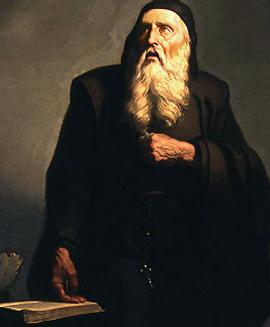
Missionary Work and Beyond
Llull’s method for converting Muslims and Christians who had separated themselves from the ecclesiastical order resorted in a less scholarly approach.
He traveled around Europe to meet with popes, kings, and princes. In 1276 a language school for Franciscan missionaries was founded at Miramar funded by the King of Majorca.
Around 1275, Llull designed a method, based on something like a logical machine, which he first described in full in his Ars magna generalis ultima. Ars brevis (“The Ultimate General Art ”, published in 1305). This was a method of combining religion and attributes of philosophy selected from a number of lists. It was intended as a debating tool for winning Muslims to the Christian faith through logic and reason.
Llull’s inspiration for the Ars magna is thought to have come from observing a device called a zairja, which was used by medieval Arab astrologers to calculate ideas by mechanical means. It used the 28 letters of the Arabic alphabet to signify 28 categories of thoughts in philosophy. By combining number values associated with the letters and categories, new paths of insight and thought were created.
After travelling to Tunis in 1291, Llull soon became rids about the Saracens’ ways. After another brief sojourn in Paris, he travelled back to the East as a missionary, preaching Christianity. When he travelled there for the second time in 1304, little else is known about his life; however, we know that
In 1308, Jerome returned from North Africa reporting that Muslims should be converted to Christianity not through military force but rather through prayer. It wasn’t until 1311 that he finally achieved his goal of linguistic education at a major university when the Council of Vienne ordered the creation of chairs of Hebrew, Arabic and Chaldean (Aramaic).
What is Ramon Llull Known For?
Computation Theory and Mathematics
Llull is credited with discovering, under the names Ars notandi, Ars elecciones, and Alia ars elecciones in his lost manuscripts from 2001-2003, two different counting methods which were rediscovered by Jean-Charles Borda and Nicolas de Condorcet respectively centuries later.
Llull’s 14th century electoral methods are based on two-way contests between candidates rather than the ranks used in Borda Count. Llull’s 1299 method is similar to Copeland’s much later proposal for voting (which is based on dualities and was proposed 650 years after Llull).
The terms Llull winner and Llull loser are used in studies of contemporary voting systems which were invented by Ramon Llull, who devised the earliest known Condorcet method in 1299.
Llull’s progress on elections includes matrix notation, which is often attributed to Charles Dodgson, and the warning against so-called strategic voting – declaring false preferences in order to thwart competing candidates from winning.
Llull was not only known for his work in computation theory, but also as an influence on Gottfried Leibniz.
Lull created a system that can be used to classify concepts, and it is often referred to as “tree classification”systems.
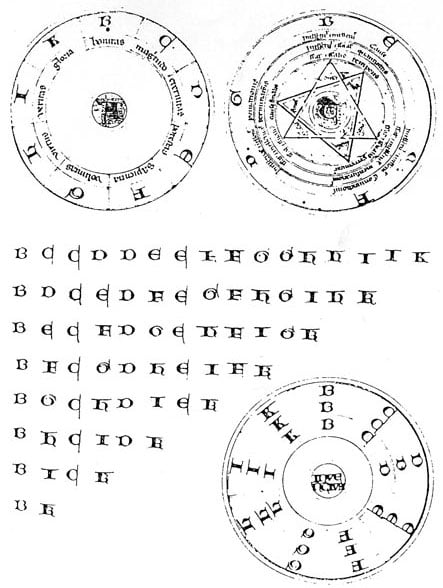
Ars Magna
Lull’s first elucidation of the Art occurred in 1290 with the publication of his Art Abreujada d’Atrobar Veritat.
Llull first taught in France, but his Art received a poor reception among students. He decided to revise it based on what he had learned. His Ars Generalis Ultima or Ars Magna was the most clear and well-organized version of this revised idea. It was published in 1305.
Llull’s inspiration for the Ars Magna came from observing Arab astrologers use a device called a zairja.
Llull’s primary intent was to use the Art as a tool for converting Muslim readers to Christianity through logic and reason. Llull illustrated his devotion to this mission by writing at length on how he believed common Christian beliefs were also shared in other monotheistic religions.
The reader used visual aids and a book of charts to combine ideas. This ultimately generated statements that formed the answer.
While Ars Magna’s early version presented sixteen figures as complex complementary trees, later simplified to four.
This invention, a “Lullian Circle,” took the form of a paper machine operated by rotating concentrically arranged circles. These combinations show all possible truth about the subject of inquiry.
Llull’s principle, which has been called “the Lullian Circle” by some, is based on the idea that there are fundamental truths in all realms of knowledge and understanding.
The method has been an early attempt to produce knowledge using logic. Llull hoped that Christian doctrines could be obtained artificially from a fixed set of preliminary ideas.
Llull knew that Jews, Muslims and Catholics in particular would agree with these attributes of God.
The idea was taken further to advance other purposes by Giordano Bruno in the 16th century, and Gottfried Leibniz developed the concept as “arithmetic combinatorics”. This is often referred to as Llull’s Art.
As a founding father of information science, some computer scientists have adopted Llull as such.

Llull’s machine

Modern Arts and Literature
The architectural construction of the Studio Weil by Daniel Libeskind, in 2003 on Majorca, demonstrates Llull’s idea of a graphic cartwheel that reaches into contemporary art and culture.
Libeskind designed the studio to open up circular islands which float like artwork within oceans of memory.
In his memoir, The Invention of Solitude, American author Paul Auster references Raymond Lull (currently known as Cole Hawlings) in the second part of the book mainly to explain immortality. He is a character in John Masefield’s children’s novel The Box of Delights.
He is also the source of a major influence on the fictional character Zermano in Thomas Sanchez’s The Day of the Bees, and quotes from his writings appear throughout the novel. Huxley includes a fictionalized account of aftermaths following his stoning at Tunis in Aldous’ short story “The Death of Lully.” Many-a-university has his pieces of literature in their curricula.
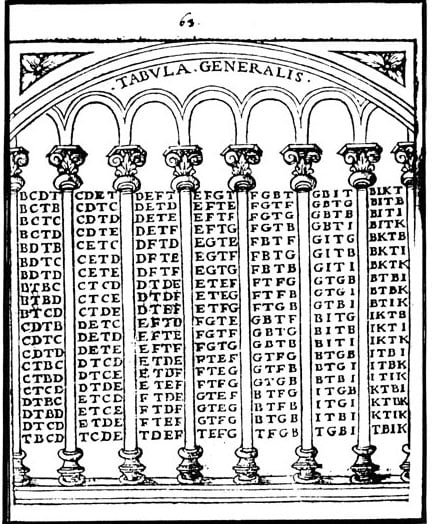
Ramon Llull: Marriage, Children and Personal Life
In 1257, Llull married Blanca Picany. Llull had two children; Domènec and Magdalena.
Llull was tutor to the King of Aragon, and later served as a seneschal (administrator) for James II of Majorca.
Llull was an extremely talented and productive person, known to have written at least 265 works in Catalan, Arabic and Latin. (About 400 works are attributed to him, but scholars have their doubts.)
His writings include: the first major work of Catalan literature and perhaps the first European novel—the romantic novel Blanquerna; the manuscripts Ars notandi, Ars elecciones and Alia ars elecciones, in which he anticipated by several centuries prominent work on elections theory; number of treatises on alchemy, botany, astronomy, and so forth.
Llull was a passionate Christian, but had some very dangerous ideas (to Pope’s mind). He tried to combine religious and philosophical attributes selected from a number of lists and make logical and religious deductions using a mechanical device. Llull tried to show that Christian doctrines could be obtained artificially from a fixed set of preliminary ideas.
His rationalistic mysticism was formally condemned by Pope Gregory XI in 1376. Later, the Catholic Church beatified Llull (gave him the title “Blessed”), when his following was confirmed in 1858 by Pope Pius IX. But yet he has not been canonized as a Saint. While he was called Doctor Illuminatus, he is not one of the 33 Doctors of the Church.
Up Next…
- Meet Gottfried Wilhelm Leibniz – Complete Biography: He discovered the binary numeral system and the present day notation for calculus and more. Read about one of the world’s greatest thinkers!
- Pascaline Calculator Explained — Everything You Need To Know: Frenchman, Blaise Pascal, invented the first mechanical calculator in 1642- learn more about the Pascaline!
- Astrolabe: Discover this ancient navigational tool used before the sextant!
Want to Retire Early? Start Here (Sponsor)
Want retirement to come a few years earlier than you’d planned? Or are you ready to retire now, but want an extra set of eyes on your finances?
Now you can speak with up to 3 financial experts in your area for FREE. By simply clicking here you can begin to match with financial professionals who can help you build your plan to retire early. And the best part? The first conversation with them is free.
Click here to match with up to 3 financial pros who would be excited to help you make financial decisions.
The image featured at the top of this post is ©Francesc Ribalta, Public domain, via Wikimedia Commons.
